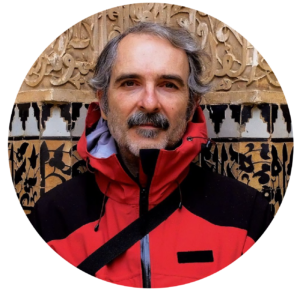How the war has affected Ukrainian Protected Areas
About the webinar
War affects people and nature. So far, roughly 30% of the Ukrainian protected sites have been impacted by military operations and the ongoing war. Recently, the situation has worsened after the destruction of the Kokhovka Dam in the Dnipro River, which is the biggest in the country. The flooding, intended to disrupt the military operations under development, has collaterally impacted all the Protected Areas located downstream, including five National Parks, three Ramsar sites and a Biosphere Reserve. Furthermore, the Lower Dnipro National Nature Park, the biggest in the country, has been wiped out. The environmental impact of the intentional destruction of the dam is catastrophic and an example of using natural resources as a weapon.
In this webinar, we heard from Anastasiia Drapaliuk, a Ukrainian local professional directly involved in the protection of Ukrainian biodiversity. She explained an aspect of the war which is usually out of focus during a military conflict due to the dramatic consequences on people’s life and livelihoods: the effect of the war on the biodiversity and the Protected Areas of a country at war. This is especially the case in Ukraine, as its Protected Areas have been heavily affected.
Anastasiia works for the Ukrainian Nature Conservation Group. The organisation directly cooperates with the Ministry of Environment in managing the Protected Area system in Ukraine, particularly during this difficult time.
If you want to support the Protected Areas of Ukraine, consider donating to the following organisations:
Ukrainian Nature Conservation Group
About the speakers + presentations

Anastasiia Drapaliuk, Expert at the Ukrainian Conservation Group, assistant to the People’s Deputy of Ukraine
Anastasiia is an expert in Protected Areas. Her accomplishments include leading the team that prepared the database for 106 new territories of the Emerald Network; leading the team that established 9 national parks and reserves in Ukraine; and organising the work on including natural territories to transboundary Ukrainian-Polish biosphere reserve “Roztochchia” in the framework of the Man and Biosphere Programme. Her educational background includes the successful finalisation of the Master of Science in Management of Protected Areas at the University of Klagenfurt, Austria.

Pep Amengual Ramis, scientific officer at the Spanish National Parks Network (OAPN)
Pep has worked in conservation for over 30 years, mostly focussed on Marine Protected Areas. He was the conservation officer at Cabrera National Park, in the Balearic Islands. Pep also works as an independent expert for the Barcelona Convention and the European Diploma of the Bern Convention. Furthermore, he is a member of the scientific committee of MedPan, the Association of Mediterranean managers of MPAs, and author of more than 20 papers and international congress communications on conservation and Marine Protected Areas.
Pep wrote an article on the environmental impact of the war (in Spanish), you can read it here (paywall).
